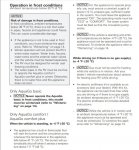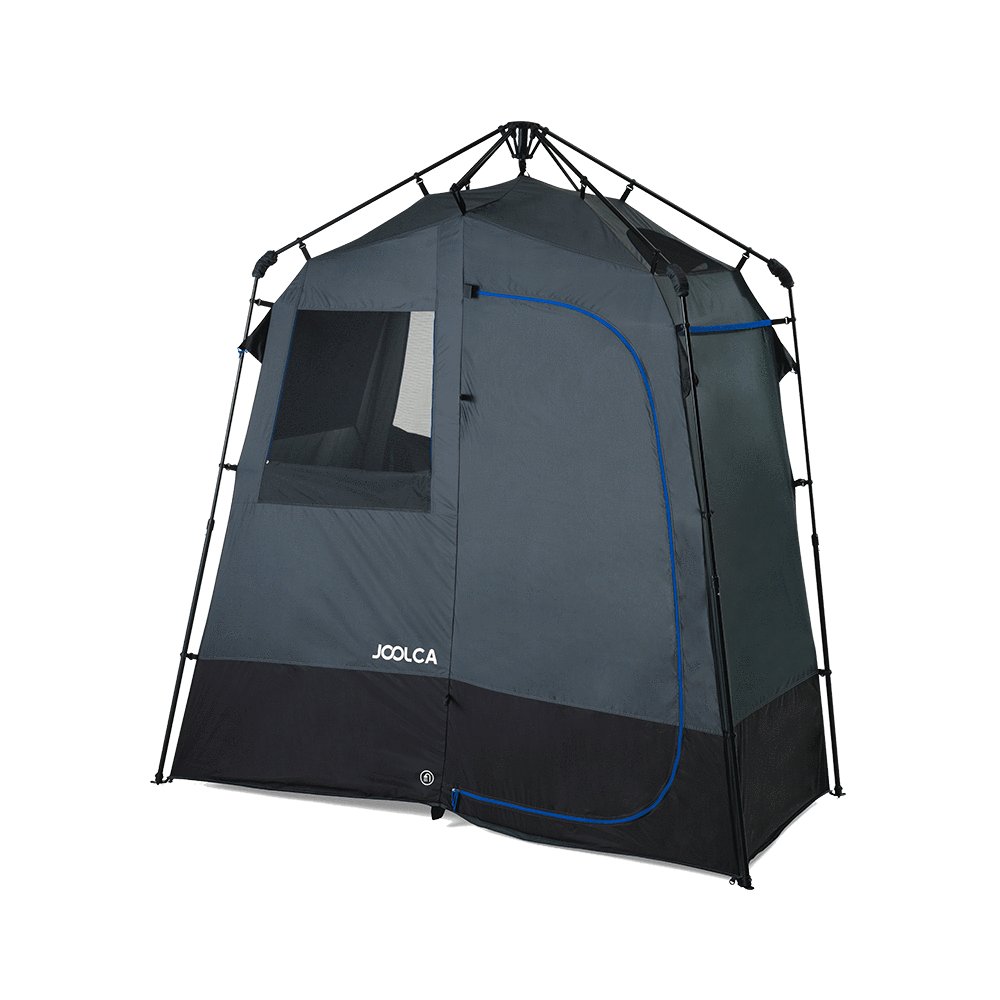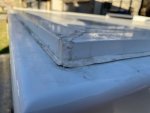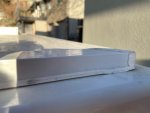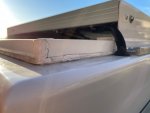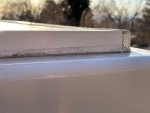PK,
Yes, CAMP-X used to come with a single 11lb/2.6 gallon propane tank. I have two and usually leave one at home to save weight. Once it starts getting a bit light, I'll throw the second one in and use up the first then switch to the second. Once home, will immediately get the empty refilled, but not bring it with until needed. On an average season, we have about a dozen weekend trips and one or two week log trips. Usually only a few trips below freezing and not deep cold. When we are out in cool weather, we typically keep the thermostat at 60 - 65F when awake and 45 - 50F at night. I'd keep it lower, but wife likes it a bit warmer than me. In both our FWC and CAMP-X, an 11lb lasts about a year and half. Surprises me how long they last. Cold weather is an entirely different animal, of course.
Yours will have a horizontal 20lb and so you'll have a LOT of onboard and it should last a good while even in winter (unless you like to keep it 70F - 75F all day and all night). We haven't had a chance to do any really cold weather in the CAMP-X. In the FWC, we did some trips in the teens and it didn't use much propane and the CAMP-X is has much better R factor.
Not sure if you planned to have water in the holding tank/lines/fixtures on those cold trips, but if so, you'll have to run the heat a fair bit even when you aren't in the camper (and maybe keep the cabinets open to ensure warm air circulates in there. I believe your camper will have a shutoff valve for the external shower (mine doesn't) so be sure to use that. Unless you purchase the Truma 12v anti-freeze accessory for your hot water heater, you should bypass and drain it at the slightest hint of cold weather. Drain at anything less than expected 40F night time temps to give you some buffer as an unexpected dip below freezing and those water heaters can easily freeze up and break parts and most of those parts, I'm told, are not serviceable so that means new water heater. Better safe than sorry and it takes about 30 seconds to flip the bypass and go outside and pop open the cover, flip down the yellow handle to remove the screen, and let it drain and really doesn't waste much water. If bitter cold, might as well just winterize it and be safe and use a portable water tank and dishpans. That's my take on it anyway. Looking forward to some of you winter-use reports!
Yes, CAMP-X used to come with a single 11lb/2.6 gallon propane tank. I have two and usually leave one at home to save weight. Once it starts getting a bit light, I'll throw the second one in and use up the first then switch to the second. Once home, will immediately get the empty refilled, but not bring it with until needed. On an average season, we have about a dozen weekend trips and one or two week log trips. Usually only a few trips below freezing and not deep cold. When we are out in cool weather, we typically keep the thermostat at 60 - 65F when awake and 45 - 50F at night. I'd keep it lower, but wife likes it a bit warmer than me. In both our FWC and CAMP-X, an 11lb lasts about a year and half. Surprises me how long they last. Cold weather is an entirely different animal, of course.
Yours will have a horizontal 20lb and so you'll have a LOT of onboard and it should last a good while even in winter (unless you like to keep it 70F - 75F all day and all night). We haven't had a chance to do any really cold weather in the CAMP-X. In the FWC, we did some trips in the teens and it didn't use much propane and the CAMP-X is has much better R factor.
Not sure if you planned to have water in the holding tank/lines/fixtures on those cold trips, but if so, you'll have to run the heat a fair bit even when you aren't in the camper (and maybe keep the cabinets open to ensure warm air circulates in there. I believe your camper will have a shutoff valve for the external shower (mine doesn't) so be sure to use that. Unless you purchase the Truma 12v anti-freeze accessory for your hot water heater, you should bypass and drain it at the slightest hint of cold weather. Drain at anything less than expected 40F night time temps to give you some buffer as an unexpected dip below freezing and those water heaters can easily freeze up and break parts and most of those parts, I'm told, are not serviceable so that means new water heater. Better safe than sorry and it takes about 30 seconds to flip the bypass and go outside and pop open the cover, flip down the yellow handle to remove the screen, and let it drain and really doesn't waste much water. If bitter cold, might as well just winterize it and be safe and use a portable water tank and dishpans. That's my take on it anyway. Looking forward to some of you winter-use reports!


